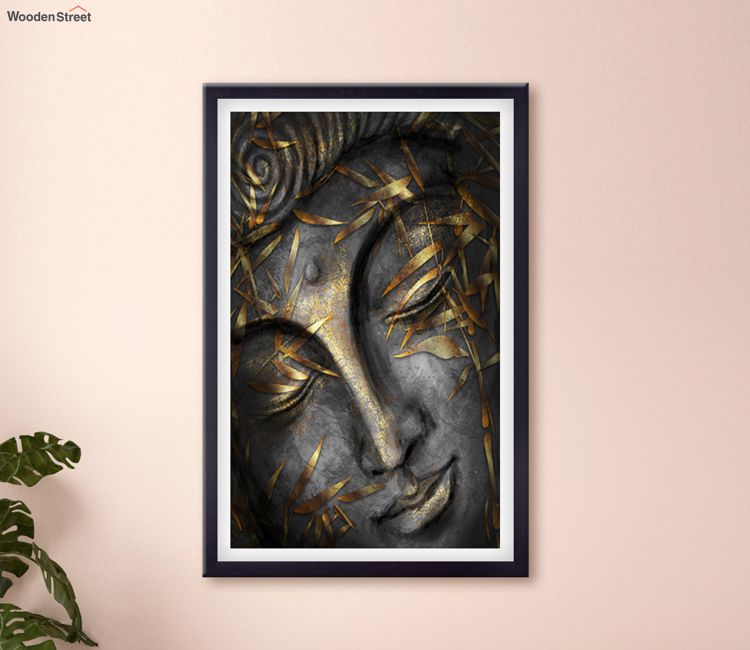 Bulk Content Creation – Scale Without Sacrificing Quality!
Bulk Content Creation – Scale Without Sacrificing Quality!
Spiritual Painting: The Intersection of Art and Inner Realms
Written by Wooden Street » Updated on: June 17th, 2025

Spiritual painting is a genre of art that transcends physical representation and delves into the mystical, transcendent, and metaphysical dimensions of existence. It is an exploration of the soul's deepest yearnings, an effort to connect with higher consciousness, and an expression of the divine that seeks to convey a sense of unity with the universe.

The Origins and Purpose of Spiritual Art
Historically, the roots of spiritual painting can be traced back to ancient cultures, where art was used to connect with the gods, the cosmos, and the unseen forces that governed life. In ancient Egypt, Greece, and India, art often had religious and spiritual functions, aiming to capture divine energy or to depict sacred narratives. The most famous example might be the cave paintings of early humans, which were believed to serve as portals to spiritual realms or as offerings to deities.
The primary purpose of spiritual painting has always been to express the intangible aspects of life—those beyond the material world. It is not about the outer form but the inner essence. Artists create with the intent of evoking spiritual awakening or reflection in the viewer. The soul, emotions, and consciousness are often depicted in abstract or symbolic forms, suggesting that spiritual truths cannot always be captured in literal ways. Instead, they are represented through colors, patterns, and forms that resonate deeply on an emotional or spiritual level.
Spirituality in the Visual Arts: Influential Movements and Artists
Throughout history, spiritual painting has manifested in various movements. One such example is the Renaissance period, where art was heavily influenced by religious themes. Artists like Leonardo da Vinci, Michelangelo, and Raphael used their works to express the divine and explore the mysteries of the human soul in relation to God. Their depictions of biblical scenes and figures transcended mere storytelling, aiming to connect viewers to a sense of the sacred.
In the 19th and 20th centuries, spiritual painting evolved further with the advent of movements such as Symbolism and Abstract Expressionism. Artists like Wassily Kandinsky and Piet Mondrian believed that color, form, and abstraction could express spiritual truths. Kandinsky, in particular, was influenced by his own spiritual philosophy and sought to create art that could evoke deep emotional and spiritual experiences. His use of geometric shapes and vibrant colors was intended to transcend the physical world and reach the spiritual realm.
Similarly, the Symbolist movement, which flourished in the late 19th century, used symbolic imagery to explore themes of mysticism, the afterlife, and the metaphysical world. Artists like Gustav Klimt and Odilon Redon created works that were both dreamlike and otherworldly, expressing a deep connection to the mysteries of existence.

Techniques and Themes in Spiritual Painting
Spiritual painting often employs a range of techniques and symbols that carry spiritual significance. One common technique is the use of light and shadow. Light is often used to represent the divine, enlightenment, or the presence of higher consciousness, while shadows symbolize the unknown or the unconscious mind. The interplay between light and dark is central to conveying the dualities of existence, such as good and evil, life and death, or material and spiritual.
Another common feature of spiritual painting is the use of color. Different colors are believed to hold particular energies and meanings. For example, blue is often associated with serenity, wisdom, and spiritual insight, while red may symbolize passion, power, or divine love. Artists use these colors deliberately to evoke particular emotional responses from the viewer or to represent different spiritual states.
Spiritual themes often revolve around the search for enlightenment, the nature of the soul, and the relationship between the individual and the divine. In many spiritual paintings, the human figure is depicted not as a mere physical being, but as a vessel for the divine spirit. The soul is often shown as a light or energy emanating from the body, or as an ethereal presence that transcends earthly constraints.
Additionally, symbolism plays a significant role in spiritual painting. Artists often incorporate symbolic elements such as animals, plants, celestial bodies, and mythological creatures to convey deeper spiritual meanings. For example, a lotus flower might symbolize spiritual awakening, while a serpent may represent transformation or the unfolding of consciousness. The presence of these symbols invites the viewer to look beyond the surface and engage with the hidden meanings embedded in the artwork.
Spiritual Painting in Contemporary Art
In contemporary art, spiritual painting continues to evolve. While some artists focus on traditional spiritual themes, others explore spirituality through modern interpretations. Today, many artists incorporate elements from different religious and cultural traditions, blending them with new age philosophies or personal spiritual experiences. The use of abstract art to represent complex spiritual ideas is a growing trend, as it allows for the expression of experiences that are difficult to articulate through traditional forms.
For example, the works of contemporary artists like Mark Rothko and Yayoi Kusama can be seen as spiritual in nature, even though they do not directly depict religious or mystical subjects. Rothko’s large color fields are often interpreted as meditative spaces that invite the viewer to experience profound emotional or spiritual states, while Kusama’s use of repetitive patterns and infinity rooms creates a sense of boundlessness, inviting the viewer into a cosmic, spiritual journey.
Additionally, the growing interest in mindfulness, meditation, and the exploration of consciousness in contemporary culture has had a profound impact on spiritual painting. Many artists are using their work as a way to explore their own spiritual journeys, whether through the exploration of inner landscapes, the use of sacred geometry, or the invocation of universal symbols.

Conclusion
Spiritual painting is more than just an artistic style—it is a means of communication between the artist and the viewer, designed to evoke inner contemplation, connection to the divine, and spiritual awakening. It reflects the eternal human quest to understand the mysteries of existence and to connect with something beyond the material world. Whether through traditional religious themes or modern abstraction, spiritual painting continues to inspire and challenge viewers, inviting them to look within and explore the depths of their own consciousness.
Note: IndiBlogHub features both user-submitted and editorial content. We do not verify third-party contributions. Read our Disclaimer and Privacy Policyfor details.
Copyright © 2019-2025 IndiBlogHub.com. All rights reserved. Hosted on DigitalOcean for fast, reliable performance.

















